Police had given the group – wearing frocks, quirky hats and glam make-up – permission to assemble, but it surely did not take lengthy for his or her tolerance to expire.
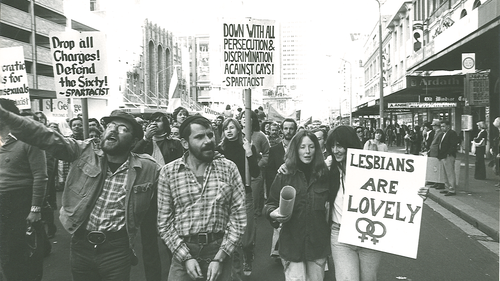
The next morning, one of many metropolis’s most generally learn newspapers, The Sydney Morning Herald, revealed the names, addresses and occupations of these arrested.
Consequently, many concerned within the march had been instantly fired, kicked out of residence or had their tenancy agreements terminated.
Others, unable to beat the avalanche of hate pedalled towards them by the media and group, died by suicide shortly after.
It was a time when there have been no overtly LGBTQ+ folks within the Australian highlight and intercourse between males carried a penalty of 14 years and a whipping in New South Wales.
The penalty for rape was simply seven.
Ken Davis, activist co-chair of the primary occasion, was there on the evening that Australia’s historical past modified endlessly.
Davis – an authentic “78er” who nonetheless marches within the parade right this moment – tells 9news.com.au what it was prefer to face such brutality, merely for current in his genuine self, and the way regardless of the progress made in subsequent a long time, there’s nonetheless extra work to be achieved.
The air was thick with pleasure, homosexual anthems like Meg Christian’s Ode to a Fitness center Trainer and Tom Robinson’s Glad to be Homosexual had been ringing loudly by means of truck audio system and the group – which might finally swell to turn into some 2000 folks sturdy – had been in excessive spirits.
“At first there wasn’t lots of people,” Davis said.
“We had a march on the Saturday morning, which had about 500 people, but then at night we planned to assemble at around 10 o’clock for a street festival – or Mardi Gras – at Taylor square.
“We had essential mass to begin down Oxford Road, with a truck with a sound system, however the police turned an increasing number of hostile they usually stored rushing us up.
“By the time we got to the corner of College Street and Oxford Street, which is now Whitlam Square, we wanted to have a bit of a party in Hyde Park to end it all off – but police soon confiscated the truck.
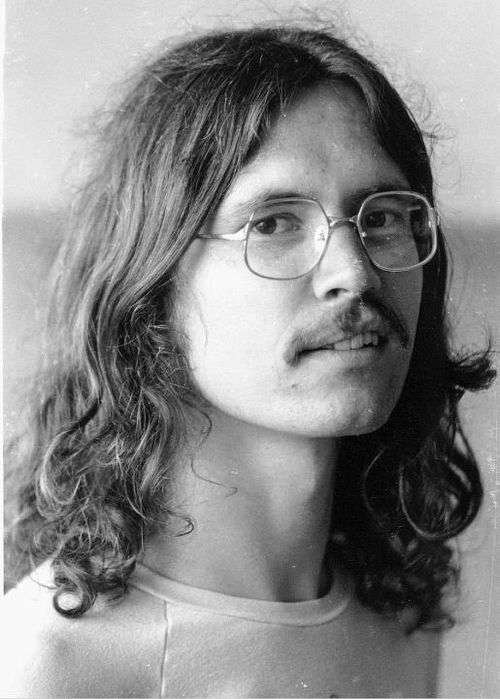
“Individuals then spontaneously marched down Faculty Road and up William straight to Kings Cross … then after folks had been dispersing on the Cross, police cordoned off each ends of Darlinghurst Highway and that is when the arrests began.”
Davis said though violence toward LGBTQ+ people at the time wasn’t uncommon, in fact quite the opposite, something changed that night in the attitude of attendees.
”The individuals who had been being arrested began to combat again,” Davis said.
“Not a lot combat again within the sense of hitting however, , pulling folks out of the palms of the police and pulling folks out of these paddy wagons.”
Davis said onlookers at Kings Cross, which consisted largely of other queer locals, sex workers and First Nations people, started to join in the resistance.
“As a result of the police had an enormous status in Darlinghurst for corruption and violence, the entire state of affairs obtained uncontrolled with folks preventing the police and the police being very brutal,” he said.
The violence suffered at the hands of officers that night has been well documented.
People were kicked, punched, shoved, had their hair pulled and were dragged along the ground.

Those who were brought back to the station said they were beaten again in cells.
“They took their badges off, which is, , a certain signal they’re about to do fairly horrible issues,” Davis said.
“They had been simply selecting folks to arrest like, for no explicit purpose … on the lookout for weak folks greater than those that had really achieved something.
“That night there were 53 arrests and we stayed all night outside Darlinghurst Police Station (now a NSW Health administrative office).
“We did not have cell phones or financial institution playing cards … so we needed to cellphone round and go to gather money for bail.”
The catalyst for change
Though violence marred what should have been a celebration of authenticity, June 24, 1978, became a defining milestone in Australia’s queer history.
“It was huge information. This was the primary time there’d been a public occasion for lesbian and homosexual folks at evening,” Davis said.
“And the extent of the police assault was unprecedented … so on Sunday the media was just about uncontrolled.
“Having your name and address published in the newspaper was devastating.”
Within the days that adopted, there was a “big community meeting” to debate the response to the arrests.
“We decided to have a ‘Drop the Charges’ march on the 15th of July, which had about 2000 people. And again, the police made more arrests,” Davis mentioned.
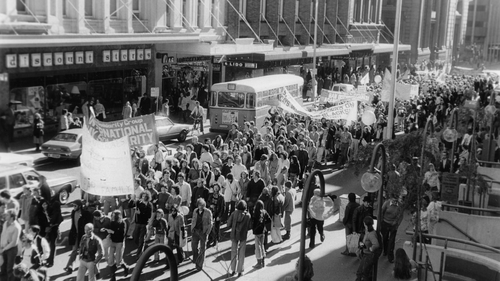
“But it was the first time that lesbian and gay rights was a central issue in political or social life in Australia.
“As a result of folks had been repeatedly arrested for peaceable public meeting, this created a unique political dynamic round civil liberties usually.
“It was a pivotal moment in terms of visibility.”
Within the ensuing months, some 125 folks had been arrested throughout quite a lot of “Drop the Charges” marches and rallies.
However by April the next yr, most prices had been dropped after numerous courtroom battles, notably by means of the assistance of attorneys working pro-bono, who had been capable of show in entrance of a choose that the arrests had been illegal.
Having these prices dropped was a big win, but it surely would not be till 1984 that homosexual intercourse between males was decriminalised in NSW.
Although the combat for equality would take a long time – and continues to be very a lot persevering with right this moment – the second Mardi Gras held in Sydney in 1979, this time formally a parade, was attended by 3000 folks and ran efficiently with out incident.
By the point the third occasion was held in 1980, 6000 folks had been in attendance.
Soar ahead to 2020 – simply previous to the outbreak of the COVID-19 pandemic – 12,500 folks now march within the parade alongside an astonishing estimated 300,000 lining the streets of Darlinghurst, Surry Hills and Paddington in celebration.
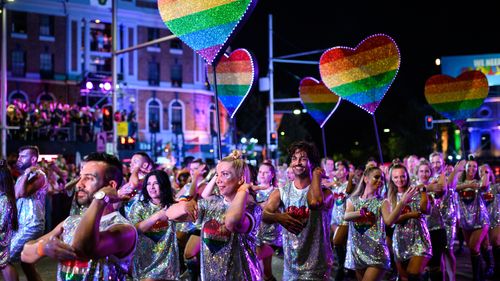
“The first Mardi Gras opened up a really big question in NSW, which was about the right for public assembly,” Davis mentioned.
Authorities’ actions on the time of the primary Mardi Gras parade had been starting to be perceived by most of the people as over-the-top and heavy handed.
A lot in order that in April 1979, Parliament repealed the NSW Abstract Offences Act laws that had allowed such arrests to be made, that means the Mardi Gras was an enormous civil rights milestone that prolonged far past the LGBTQ+ group.
“The beauty of the first Mardi Gras struggle was suddenly the Offences Act was changed, which completely put the onus on the police,” Davis mentioned.
“We’ve made enormous changes from 1978 to today.
“It has been a rare success. However the credit score for that’s primarily ourselves within the sense of our motion and our allies.
“And there is still a lot of unfinished business and work to be done, particularly in terms of the transgender agenda.”
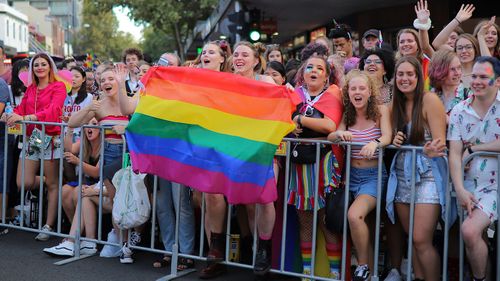
Then Editor-in-Chief Darren Goodsir admitted the paper’s actions brought on immense harm, heartbreak and humiliation and mentioned the transfer “would never happen again today”.
”We acknowledge and apologise for the hurt and suffering that reporting caused,” Goodsir mentioned.
A day later, the NSW Authorities additionally issued an apology to the 78ers.
Liberal MP Bruce Notley-Smith delivered the federal government’s apology and acknowledged these first “game changers” in attendance had been “mistreated, embarrassed and shamed”.
Every week later, the NSW Police Pressure adopted swimsuit, apologising over the illegal arrests and bashings.
“Sorry for the way that the Mardi Gras was policed on the first occasion in 1978,” then NSW Police Commissioner Andrew Scipione mentioned.
“For that, we apologise, and we acknowledge the pain and hurt that police actions caused at that event in 1978.”
Davis mentioned though the apologies represented progress, the police’s “attitude” and “laws that enable police harassment” have to be reviewed.
Requested about his emotions on Mardi Gras in its present kind, Davis questioned how commercialised the occasion had turn into, however mentioned undeniably remained a vital “symbol of freedom”.
“Beyond that, though, it’s not just about sexuality,” he mentioned.
“It symbolises Sydney as an open community, a cosmopolitan community.
“It is essential that it is nonetheless obtained inventive vitality and that it is nonetheless basically about lesbian and homosexual identification.
“It comes from a place of a great struggle. And that still needs to be reinforced.”
#australiannews #australian_news